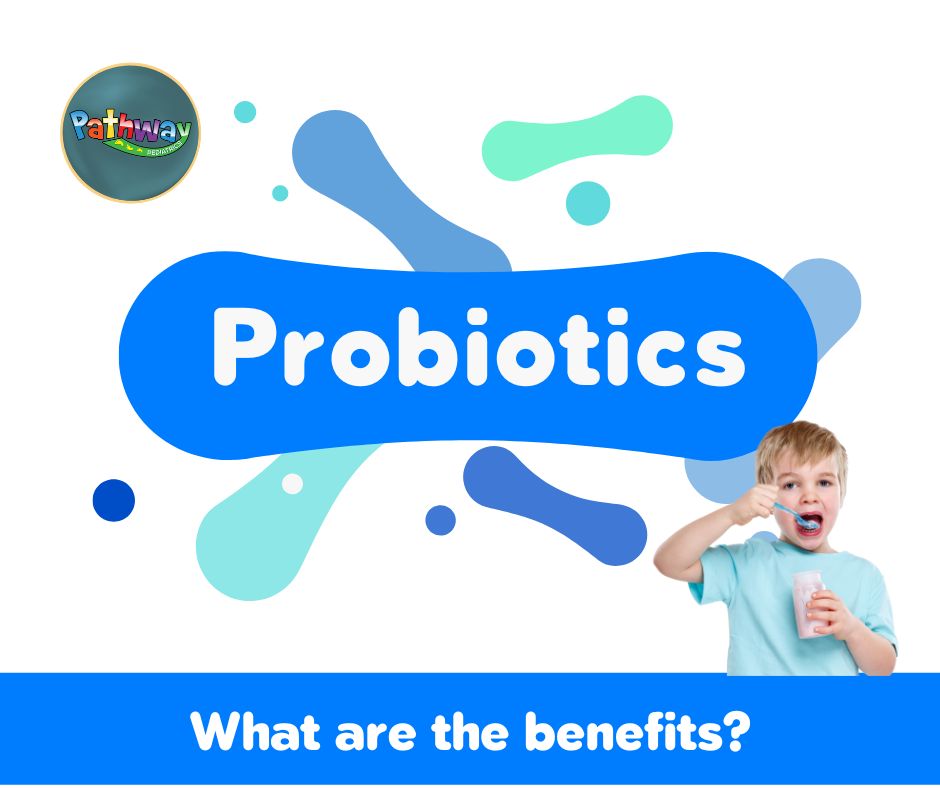Probiotics
June 15, 2022

Can probiotics help when my child has an infection and needs to take antibiotics?

Christine Waasdorp Hurtado, MD, FAAP
Answer
Antibiotics can kill both good and bad bacteria in your child’s gut. This may throw your child’s gut “microbiome” out of balance. The microbiome is made up of the microscopic organisms—bacteria, fungi, viruses, and parasites—that live in our bodies. That’s why it’s important to only use antibiotics when they’re really needed.
If your child’s gut microbiome is disrupted from antibiotics, your doctor may recommend boosting the probiotics in their diet. Signs that your child’s microbiome is off balance include:
- Diarrhea
- Abdominal cramping
- Nausea
- Gas
- Vomiting
How can probiotics help?
 Probiotics are made up of the good bacteria that live in our bodies. After your child has been on antibiotics, probiotics can help get the gut microbiome back to a healthy balance by putting beneficial bacteria back in. Studies also suggest that probiotics may help relieve the diarrhea, gas, and cramping caused by antibiotics.
Probiotics are made up of the good bacteria that live in our bodies. After your child has been on antibiotics, probiotics can help get the gut microbiome back to a healthy balance by putting beneficial bacteria back in. Studies also suggest that probiotics may help relieve the diarrhea, gas, and cramping caused by antibiotics.
A balanced microbiome may even support your child’s immune system to help fight future infections, research suggests. Our gut microbiome plays a big part in how our immune system functions. In fact, our gut contains 70% of the immune system.
There are hundreds of bacteria that are considered to be probiotics. A few of the most commonly used strains are Lactobacillus, Bifidobacterium, and Saccharomyces.
You may have also heard of prebiotics. These foods or supplements contain complex carbohydrates, which can’t be digested. The carbs ferment in the digestive system, feeding the good bacteria in the gut and helping them grow and thrive. Prebiotics are like fertilizer for the microbiome.
Which foods contain probiotics?
Many fermented foods have probiotics in them. Examples include:
- Yogurt
- Kefir (a yogurt-like beverage)
- Sauerkraut and pickles (raw and refrigerated)
- Kimchi (made from fermented cabbage)
- Tempeh and miso (made from fermented soybeans)
- Buttermilk
- Sourdough bread
Is kombucha safe for kids?
Probiotics are also found in kombucha, a carbonated drink made with fermented sweetened tea. But drinking kombucha can be risky for kids since it may contain alcohol. Children shouldn’t drink home-brewed kombucha because it may contain harmful bacteria. This is especially true if your child has a health condition that weakens their immune system. It’s a good idea to talk to your pediatrician before you give your child kombucha. After that, start with no more than 4 ounces a day.
Which foods contain prebiotics?
Prebiotics are found in many foods, especially those with a high fiber content. Examples include:
- Asparagus
- Snow peas
- Whole grains
- Bananas
- Onions
- Soybeans
- Garlic
What about supplements?
Probiotics and prebiotics are also sold as supplements, in capsule, tablet, powder and liquid form. But keep in mind that supplements are not regulated by the U.S. Food and Drug Administration. That means there aren’t any official guidelines on how much to take or for how long. Be sure to talk to your pediatrician before giving your child any supplement, including probiotics or prebiotics.
When should I add probiotics to my child’s diet, and for how long?
Your child’s microbiome should recover on its own after taking antibiotics, as long as they’re eating healthy foods. You can add foods with prebiotics or probiotics to help get that balance back, too.
You may want to wait to introduce more prebiotics or probiotics into your child’s diet until the antibiotics are done. This is because the antibiotics may quickly wipe out the healthy bacteria you’re trying to introduce.
However, if your child has had antibiotic-associated diarrhea (AAD) before or has it now, it won’t hurt to make sure they’re getting extra probiotics in their diet while they’re on antibiotics. In fact, some research shows suggests that probiotics may help prevent AAD in kids when they’re consumed along with antibiotics.
If you choose to wait, start adding prebiotics or probiotics on the last day of your child’s antibiotics. Whether you start them right away or wait until your child is done, continue having extra prebiotics or probiotics in your child’s diet for two to four weeks. This will give your child’s microbiome time to recover.
Is there such a thing as too much prebiotic or probiotic?
Actually, no. When you have prebiotics in your diet, the bacteria consume the amount they need to stay healthy and active. The rest passes through the digestive system into the stool.
The same goes for probiotics. If you get too many, there’s nowhere for them to go, so they also pass into the stool.
Next Post >>